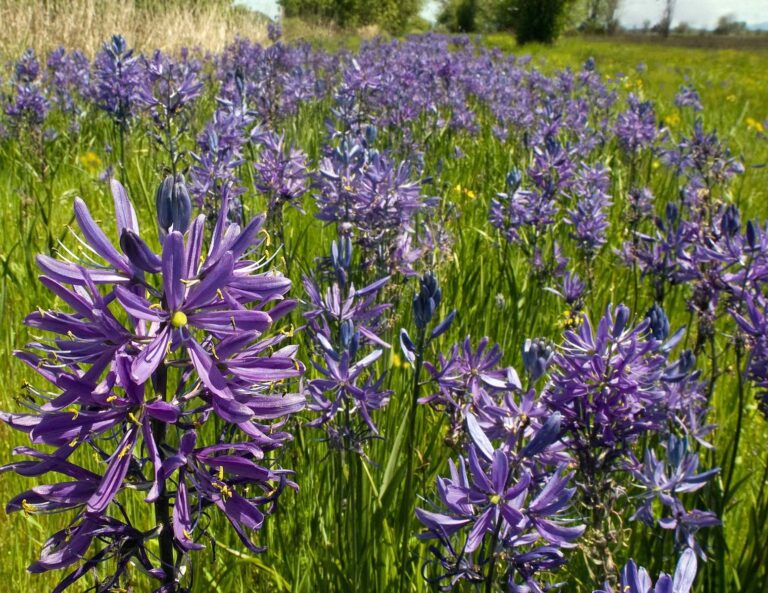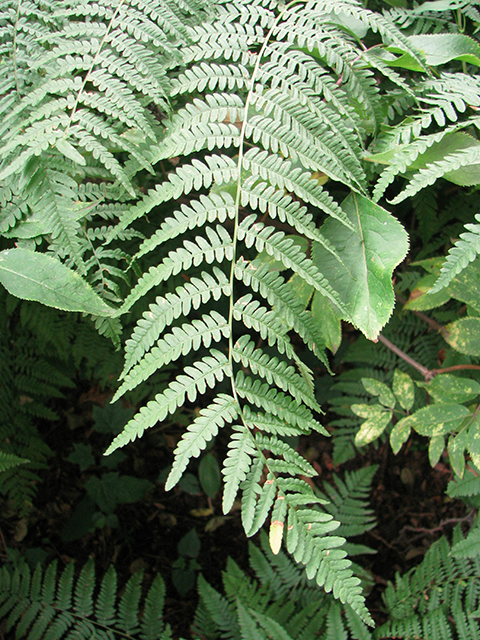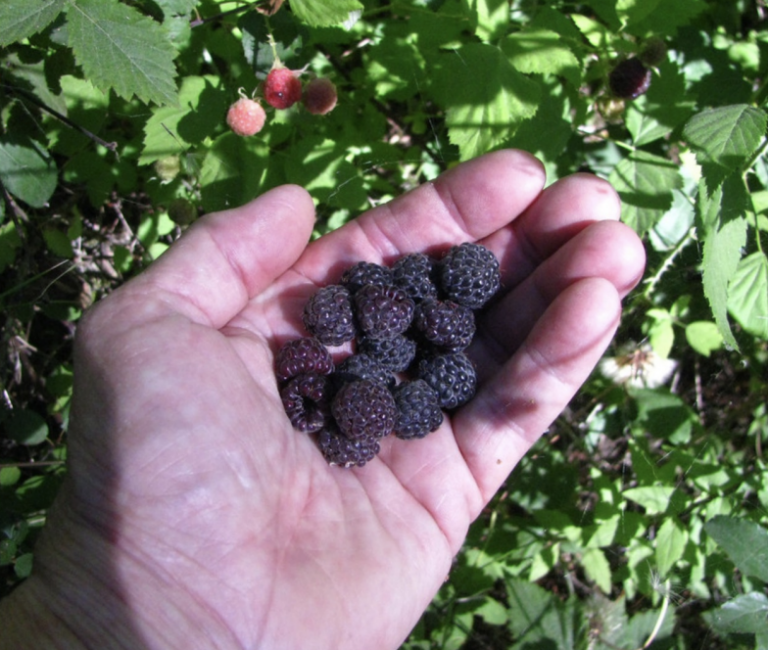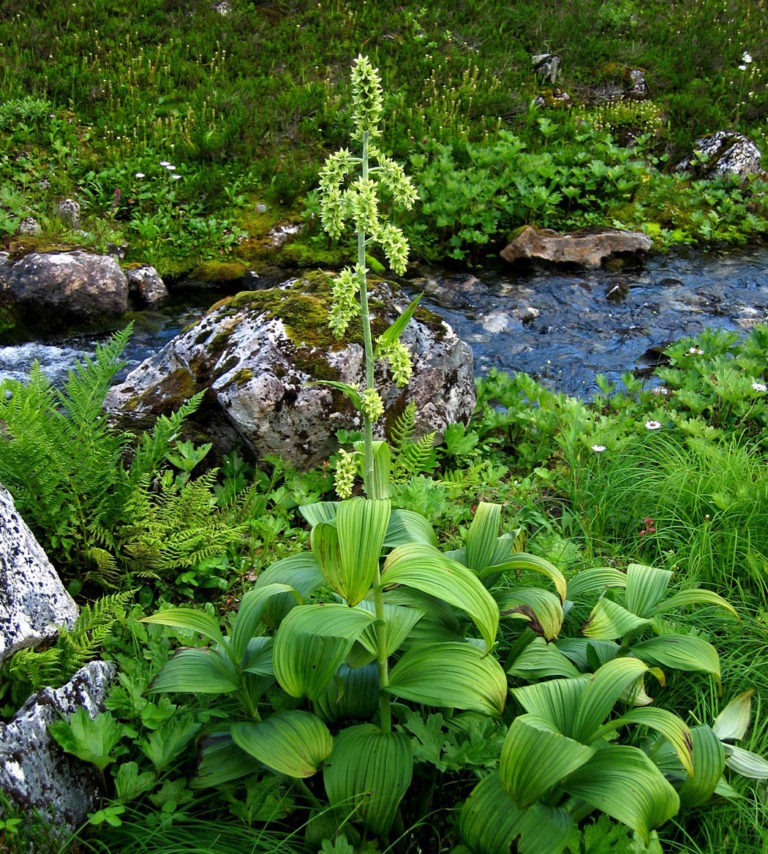This page includes resources on plants which can be downloaded or printed, as well as related books on plants and language.
Jump to: more plant resources on this website, plant resources on other websites, or plant books.
Plant resources on this website
Other plant resources
Plant Profiles – Ethnobotany UVIC
Browse an online series of native plant profiles started by Environmental Studies students. These profiles were created by ES 421 students as a part of their final plant project. Students were instructed to create items related to either technology, medicine, or nutrition out of local plant species. During this process, students were required to create informative profiles for all plant species used, a short presentation on the creation process, followed by a reflective essay. The plant profiles of all species used can be found below. Included are the respective names (common, scientific, and Hulkemel’em), cautions, botanical descriptions, local habitat, ethnobotanical applications, and locations on UVic campus.
Museum of Vancouver – Indigenous Plant Guide
Play the audio and listen to how to say the plants in the Squamish language. Translated by Rebecca Duncan.
E-Flora BC is an online biogeographic atlas of the flora (vascular plants, bryophytes, lichens, and algae), fungi and slime molds of British Columbia. It includes a significant citizen science data component.
iNaturalist is an online social network of people sharing biodiversity information to help each other learn about nature. It’s also a crowdsourced species identification system and an organism occurrence recording tool. You can use it to record your own observations, get help with identifications, collaborate with others to collect this kind of information for a common purpose, or access the observational data collected by iNaturalist users (inaturalist.org, About).
This website includes information on the plants in Camosun College’s native plant garden.
“Learn to identify the plants in our Indigenous Plant Garden, and discover their uses. Names are listed in SENĆOŦEN, English, and Latin.” (camosun.ca, Native Plants)
Native Plants of the Pacific Northwest
This website was designed for professional landscape designers, horticulturists, nurserymen, home gardeners, natural history buffs and anyone interested in improving the ecology of local environments for future generations of people, plants and animals.
Jared Qwustenuxun Williams
Jared has a YouTube channel and creates TikTok videos sharing various Hul’q’umi’num’ plant names and information. Including a Somenos Marsh Hul’q’umi’num Walkthrough.
Find Jared on YouTube, and TikTok.
Luschiim’s Plants: Hul’q’umi’num’ People and the Plant World Historically Speaking
A video featuring Luschiim Arvid Charlie and Nancy Turner, created by the Ladysmith Historical Society
Watch on YouTube.
Traditional and Current Uses of Quw’utsun (Cowichan) Plants – NV
This is a video of a presentation given by naturalist Genevieve Singleton to Nature Vancouver. In this presentation Genevieve will share traditional and current uses of BC coastal plants with a focus on the beautiful and varied Quw’utsun watershed. Through studying the Hul’q’umi’num’ language with Cowichan elders, she has learned the plants’ traditional names as well as their many uses. She believes that the relatively simple act of renaming can shift the way we think about the plants we know and the places we live. Many of the plants discussed will be familiar to us, but with Genevieve as a guide we can learn to approach and appreciate them in a new way.
Watch on YouTube.
Ancestral Knowledge and Northwest Native Plants with Arianna Johnny-Wadsworth
Indigenous peoples have cultivated traditional plants and medicines for thousands of years. Cedar, devils club, and tobacco all have spiritual and healing properties. Learn how to Wild-Craft harvest, prepare, and create your own cures with Coast Salish plant medicines.
Arianna, a knowledge keeper of Quw’utsun’ ways, shares valuable teachings, recipes, and methods taught to her by her grandmother and elders of her nation. Arianna believes true healing comes from a sacred relationship to the natural world
Plant books
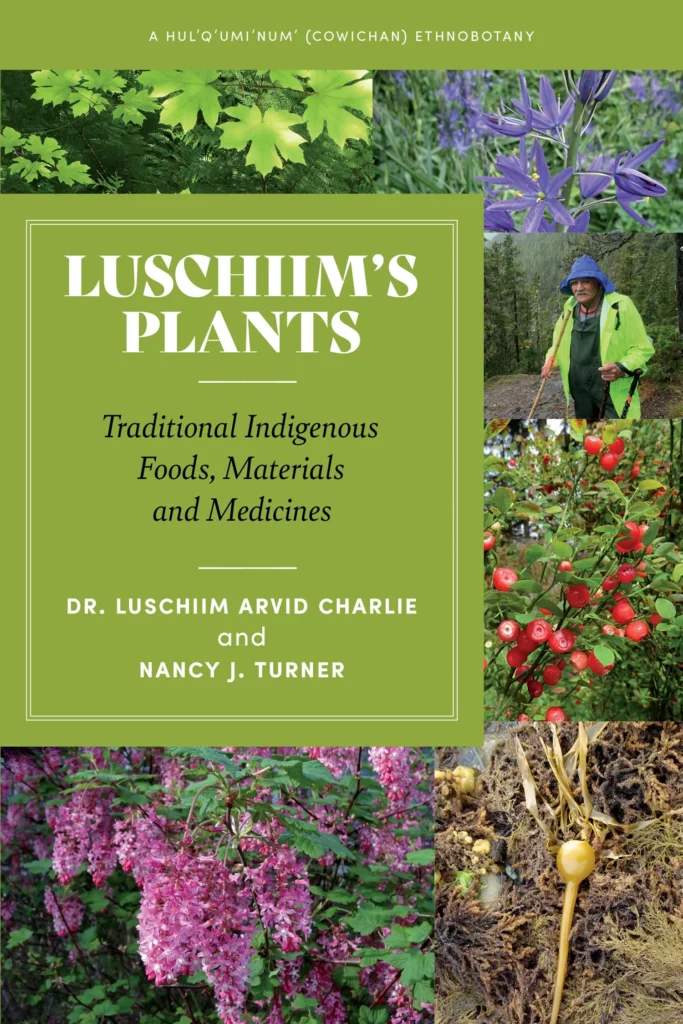
Luschiim’s Plants: Traditional Indigenous Foods, Materials and Medicines (2021)
Dr. Luschiim Arvid Charlie and Nancy J. Turner
Respected Cowichan Tribe Elder and botanical expert, Luschiim Arvid Charlie, began his education in early childhood, learning from his great grandparents and others of their generation. Luschiim’s Plants represents his dedication to the survival of the Hul′q′umi′num′ language and traditional knowledge of plants for future generations.
Find Luschiim’s Plants at the SFU Library and or on Harbour Publishing.
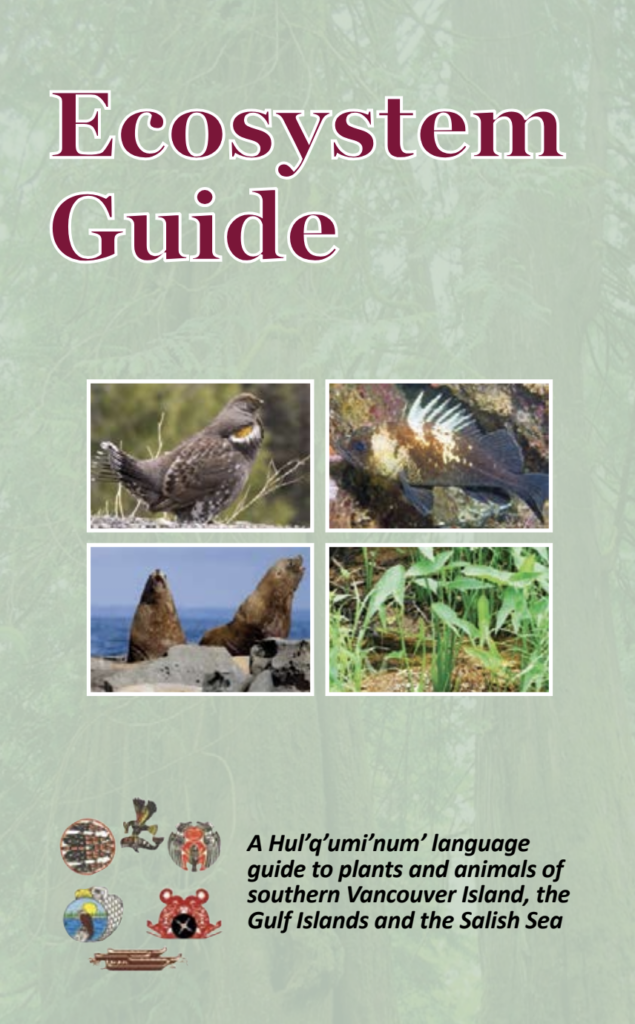
Ecosystem guide: a Hul’q’umi’num language guide to plants and animals of southern Vancouver Island, the Gulf Islands and the Salish Sea (2011)
Hul’qumi’num Treaty Group
This book is the result of a unique collaborative project between the
Hul’qumi’num Treaty Group (HTG), Gulf Islands National Park Reserve
(Parks Canada), and University of Victoria (Department of Linguistics).
In the fall of 2005 these three partners agreed to publish a multilingual, illustrated guide to significant plants, animals, birds and
marine creatures found in the Coast Salish territories of the southern
Gulf Islands, where Parks Canada has established Gulf Islands National
Park Reserve.
The PDF can be found on the NLPS website.
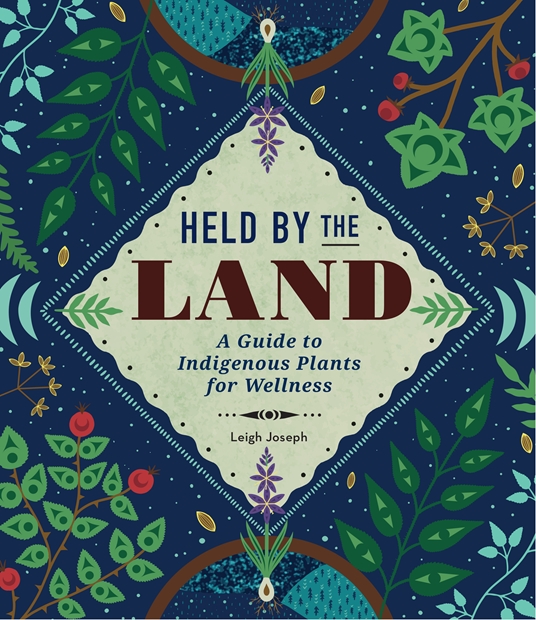
Held by the Land: A Guide to Indigenous Plants for Wellness (2023)
Leigh Joseph
Author Leigh Joseph, an ethnobotanist and a member of the Squamish Nation, provides a beautifully illustrated essential introduction to Indigenous plant knowledge.
Find Held by the Land at the SFU Library or on the publisher’s website.
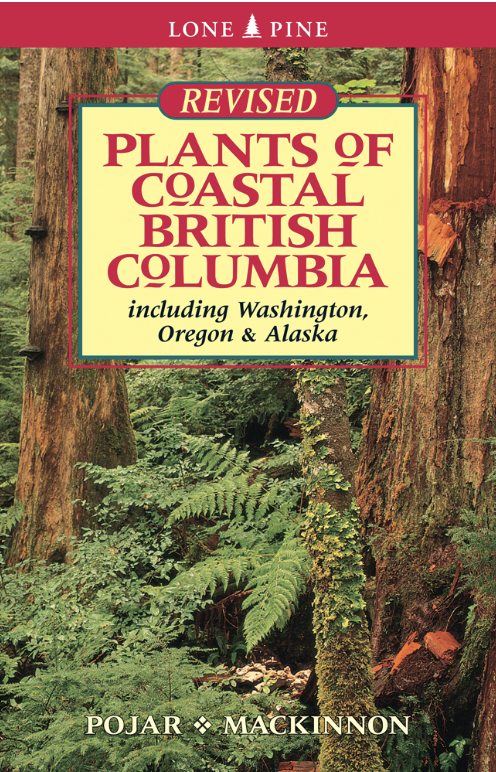
Plants of coastal British Columbia: including Washington, Oregon & Alaska (2004)
Jim Pojar and Andy MacKinnon
This easy-to-use field guide features 794 species of plants commonly found along the Pacific coast from Oregon to Alaska, including trees, shrubs, wildflowers, aquatic plants, grasses, ferns, mosses and lichens.
Find Plants of coastal British Columbia at the SFU Library.
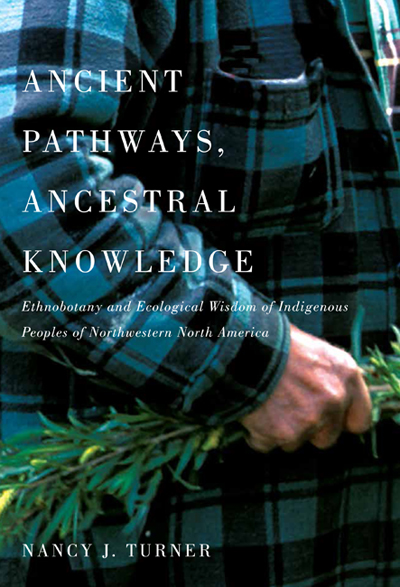
Ancient Pathways, Ancestral Knowledge: Ethnobotany and Ecological Wisdom of Indigenous Peoples of Northwestern North America (2014)
Nancy J. Turner
Drawing on information shared by Indigenous botanical experts and collaborators, the ethnographic and historical record, and from linguistics, palaeobotany, archaeology, phytogeography, and other fields, Turner weaves together a complex understanding of the traditions of use and management of plant resources in this vast region.
Find Ancient Pathways, Ancestral Knowledge at the SFU Library or on McGill-Queen‘s University Press.
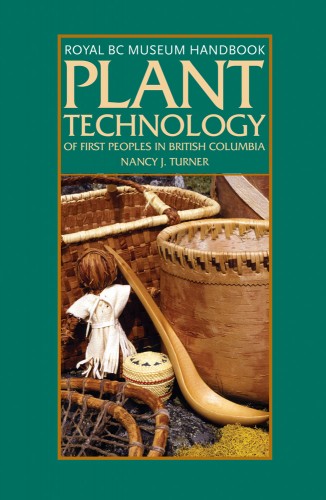
Plant Technology of First Peoples in British Columbia (1998)
Nancy J. Turner
“This excellent field guide to many plants native to British Columbia emphasizes the traditional technological uses of plant materials by the First Peoples of the region…. This well-organized, clearly written book contains a wealth of fascination information for both the ethnobotanist and the interested layperson.” – Nikki Tate-Stratton, Canadian Book Review Annual
Find Plant Technology of First Peoples in British Columbia at the SFU Library.
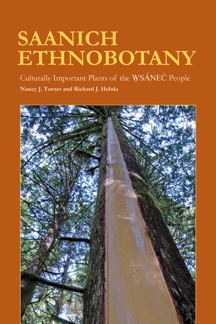
Saanich Ethnobotany : Culturally Important Plants of the W̱SÁNEĆ People (2012)
Nancy J. Turner and Richard J. Hebda
Nancy Turner and Richard Hebda present the results of many years of working with botanical experts from the Saanich Nation on southern Vancouver Island. Elders Violet Williams of Pauquachin, Elsie Claxton of Tsawout, and Christopher Paul and Dave Elliott of Tsartlip pass on their knowledge of plants and their uses to future generations of Saanich and Coast Salish people, and to anyone interested in native plants and their uses.
Find Saanich Ethnobotany at the SFU Library.
